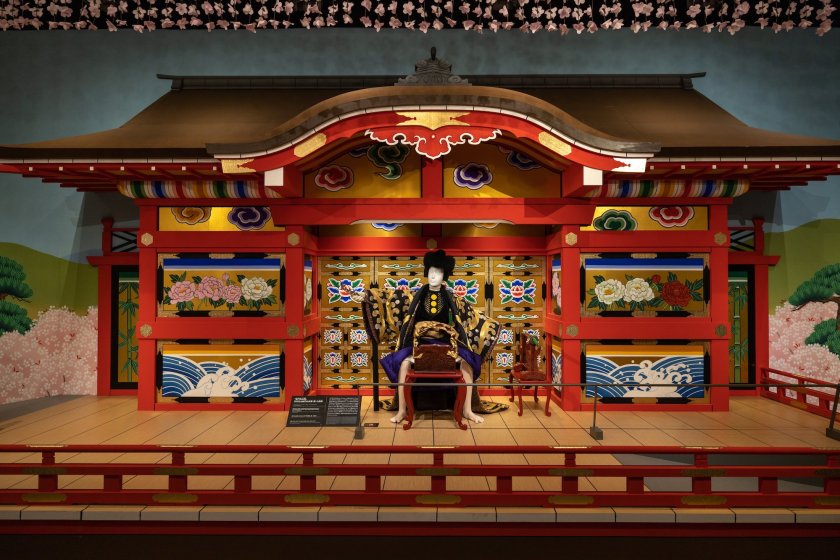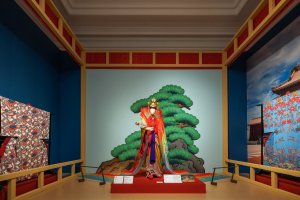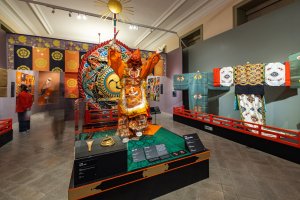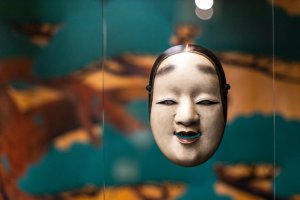A stunning new exhibition at Tokyo National Museum highlights the artisanship, history, culture and legacy of five traditional Japanese performing arts.
Japan is a country fizzing with culture from the streets and small art spaces which are located in each and every prefecture to the giant and storied institutions and museums which have been serving as cultural hubs for decades. Led by the Agency for Cultural Affairs and the Japan Arts Council, Japan Cultural Expo is a collaborative, inter-agency project drawing on the cooperation of numerous public and private-sector partners which aims at showcasing the best of Japanese arts and culture and due to its VIRTUAL PLATFORM it is available to people all over the world.
This platform combines experiences at physical venues and “virtual” experiences through online digital content, promoting these within Japan and beyond. Japan Cultural Expo VIRTUAL PLATFORM allows everyone to experience its art exhibitions, performing arts, nature and art festivals in the virtual world, utilizing video, VR and images. Junko Kawamura, Japan Arts Council President, in a recent interview with Japan Travel says, "We’re hoping that as many people as possible will enjoy Japanese culture at Japan Cultural Expo and although it has been difficult because of Covid we’re also hoping that this will offer a place for exchange as well."

One of the latest blockbuster exhibitions which is currently taking place at the Tokyo National Museum in Ueno is "UNESCO Intangible Cultural Heritage Special Exhibition: The World of Traditional Performing Arts." Located in the majestic Hyokeikan building, this exhibition is a reflection of the cultural scheduling of Japan Cultural Expo and its relationship with other National Theaters which are located throughout the country.
"So, in this exhibition we are showcasing the five traditional performing arts which are also registered as UNESCO intangible cultural heritages and the architecture of Tokyo National Museum, which is also a cultural treasure itself," adds Kawamura-san. "So what we’re trying to do is to introduce intangible cultural assets inside a tangible cultural asset. One of the main features is that we have brought performing arts that are performed in five different theaters all together to exist in Tokyo National Museum."
The five traditional performing arts that Kawamura-san refers to and which are showcased at this new exhibition are Kabuki, Bunraku, Noh and Kyogen, Gagaku and Kumiodori. Together these artforms represent the centuries of history, distinctive visual and musical aesthetics and a devotion to artisanship and traditions that are kept alive by performers, many of whom inherited their love for performing arts from their ancestors who have passed down the skills and devotion to these living cultural treasures. Located in Hyokeikan, each performing art has its own space or room which instructs visitors about the history, etiquette and nature of each particular artform.

Utilizing sublime costumes, actual stages, props, set design and video, visitors are able to come face to face with Kabuki, Bunraku, Noh and Kyogen, Gagaku and Kumiodori and feel and embrace their uniqueness and cultural values.

Some of the highlights and vibrant examples of the craftsmanship involved in these artforms are the colorful and superbly preserved bingata costumes involved in the Okinawan Kumiodori performances and the display of wooden puppetry which goes into Bunraku performances from the stages of creating these majestic creations to the different character faces which are unforgettable.

Kawamura-san explains:
"And these traditional performing arts are still performed even in the present times as classics, and that is because, for one thing, acting or performing methods have been passed on for several hundred years. But not only that, their costumes, stage settings, props or wigs, or even techniques to handle performer’s wigs—the technician is called tokoyama in Japanese—and those things and techniques have also been passed on for several hundred years. And these skills have also been recognised by Japan as techniques that support the important cultural treasures. Here again you can also find nature in, for example, different titles or costumes of these traditional performers."
Other programs which are participating in Japan Cultural Expo include Noh/Kyogen performances at the National Noh Theatre throughout March and a series of not-to-be-missed performances of a masterpiece of Kabuki, "Omi Genji Senjin Yakata" which runs from March 3 to March 27 at the National Theatre and which has a handy English synopsis available for visitors.

With the slogan "Art moves us all" Japan Cultural Expo and its multifarious affiliated programs aim to bring Japanese culture to the fore with an eclectic mix of exhibitions and events for both those in the country and for those overseas. With a comprehensive events listing page, the interactive VIRTUAL PLATFORM source, digital galleries and interviews with practitioners it's a veritable one-stop resource for Japanese culture.
"UNESCO Intangible Cultural Heritage Special Exhibition: The World of Traditional Performing Arts" is a thoroughly comprehensive look of the five major Japanese performing arts and places you intimately in the actual spaces and stages used for these arts. The stunning costumes, artisanship and history which complete these performing arts are there for all to see and you could easily lose yourself in this magical world of performance and tradition. Guide yourself through the individual rooms and immerse yourself in the world of Japanese performing arts and perhaps you will see Japan, again, through a different and more culturally enlightened lens.































